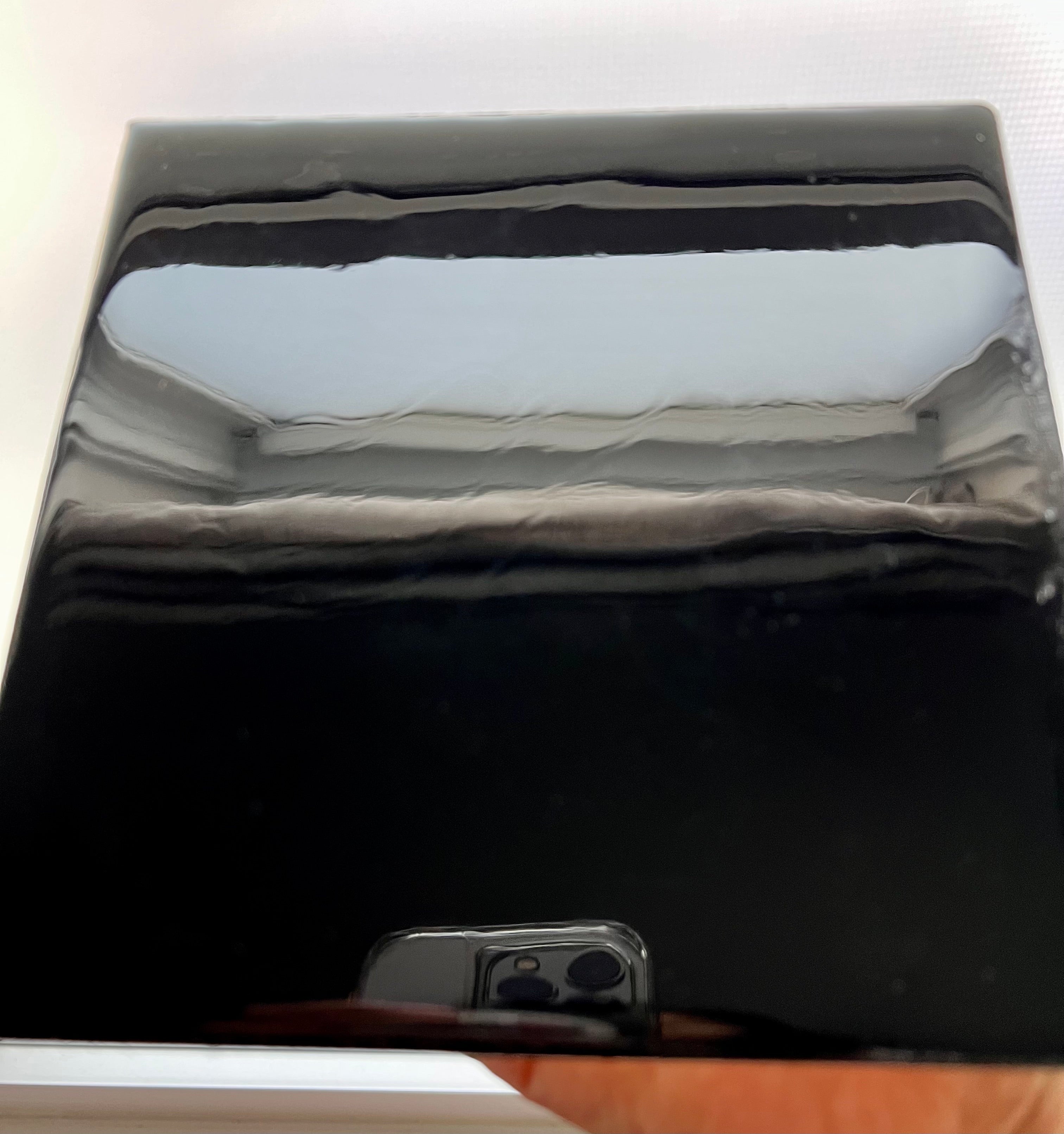If you've ever found yourself with cloudy resin and you're not sure what caused it, this blog is for you. Cloudiness can occur in both in liquid and cured resin, but the good news is that there's usually a clear explanation behind it.
In this article, I'm going to explore 6 common reasons why resin might become cloudy. I'll also explain how to prevent it and, when possible, how to fix it for crystal-clear results.
Understanding The Resin Curing Process
First, let's get back to basics. Epoxy resin start with two liquid parts: a resin and a hardener. When the resin and hardener are properly measured, mixed and allowed to cure in ideal conditions, they undergo a chemical reaction and transform from a liquid into a solid. The result is a resin that's strong, hard, glossy, and clear.
However, if certain conditions aren't met, a variety of issues can result including sticky resin, bendy resin, a greasy film on the surface, and ... you guessed it ... cloudy resin.
Common Causes of Cloudy Resin - Liquid
| Cause | Description | Prevention / Solution |
|---|---|---|
| Cold Temperatures (Liquid Resin) | Cold resin creates microbubbles and becomes cloudy and thick like taffy. These bubbles cannot be removed with a torch. | Use resin at room temperature (23–30°C / 72–85°F). Warm sealed bottles in a warm water bath before mixing. Never warm already mixed resin and hardener. |
| Under Mixing | Cloudy streaks remain if resin and hardener are not fully combined, leading to improper cure and soft, sticky resin. | Mix thoroughly for at least 3 minutes, scraping sides and bottom of the container until streaks disappear. |
| Whipping While Mixing | Whipping introduces excessive air, creating frothy, cloudy resin with lots of bubbles. | Stir slowly and methodically to minimize bubbles. Always scrape the sides and bottom of your mixing cup. |
| Matte Silicone Mold (Cured Resin) | A matte mold creates a matte finish on the cured resin surface, affecting glossiness. | Use molds with a glossy interior for a shiny finish. For matte molds, apply a clear resin topcoat after curing to restore shine. |
| Moisture Contamination | Cloudy or hazy areas caused by water content in tools, inclusions, or air. | Ensure all materials and inclusions are completely dry. Avoid working in humid or wet conditions. If damage occurs, sand down affected area and apply a fresh coat of resin. |
| High Humidity | Humidity above 80% can cause amine blush—an oily film and cloudiness on the surface. | Keep humidity below 80%, ideally around 50%. Use a dehumidifier or air conditioning before and during your project. Avoid resining during humid or rainy days if control isn't possible. |
1. Cold Temperatures
Resin colder than standard room temperature has a cloudy, milky appearance once mixed due to thousands of cold-induced micro bubbles. You'll never be able torch these micro bubbles out - believe me, I've tried. Cold resin also has a thick, taffy-like consistency, which makes it difficult to pour, mix, and spread.
To prevent cold-induced cloudiness in resin:
- Use the product at standard room temperature or slightly warmer (no lower than 23ºC / 72ºF and no warmer than 30ºC / 85ºF.)
- If the resin is colder than the recommended range, place the tightly sealed bottles in a warm water bath to bring it up to temperature before measuring and mixing. This is really important! If you place mixed resin and hardener in a water bath, the warm temperatures will prompt it to flash cure.
- Store tightly sealed resin and hardener bottles at room temperature.


2. Under Mixing
When you first mix the resin and hardener, you'll notice cloudy streaks as the two parts combine. This is totally normal, and after the recommended mixing time, these streaks should no longer be visible. But if the resin is under-mixed, not only will these cloudy streaks remain, but you'll likely end up with sticky resin as well.


3. Whipping The Resin
It's important to stir the resin and hardener thoroughly for at least 3 minutes to ensure a proper cure. While mixing the resin, it can be tempting to beat or whip it, but this will create a cloudy, frothy looking resin, with far more bubbles than necessary.


To prevent excess bubbles, stir slowly and methodically, scraping the bottom and sides of the mixing container as you go, until the resin is clear and there are no more visible streaks.
Common Causes of Cloudy Resin - Cured
4. Matte Silicone Mold
If you plan to pour resin into a silicone mold, pay attention to the interior finish because this will directly impact the appearance of your cured resin. Simply put, a matte mold gives a matte finish on your cured resin, while a glossy interior results in a glossy finish.
Now, if your favorite mold has a matte interior, don't worry; you can still use it. However, you'll need to take an extra step for a glossy look. After removing the cured resin from the mold, either pour or brush on another layer of clear resin for a glossy finish.

5. Moisture
Moisture can cause resin to develop cloudy, white, or hazy areas, affecting its clarity and visual appeal. Moisture can be the result of several things including:
- Paint, glue, or sealant on the substrate that hasn't fully dried
- Wet inclusions in the resin, such as flowers or leaves
- Contamination from water through wet tools or drips from a warm water bath
- Moisture in the surrounding air as the resin cures
To prevent cloudiness caused by moisture, make sure all your materials and tools are completely dry before introducing them to resin.
Unfortunately, once cloudiness from moisture appears, it's very difficult to fix because it's usually deep within the resin layer.
In these cases, the only option worth trying is to carefully sand down as much of the affected resin layer as you can, followed by pouring a fresh coat of resin. Be aware that you may not be able to remove all of the cloudy resin, and you could damage the artwork below.
💡 TIP: To learn more, see our blog How Does Moisture Affect Epoxy Resin?

6. Humidity
A high moisture content in the air can cause amine blush, characterized by a tacky or oily film and a cloudy appearance on the surface. To avoid this:
- Maintain a consistent temperature and humidity levels below 80%, and preferably at 50%
- Use air conditioning to help reduce humidity
- If you live in a highly humid climate, run a dehumidifier the day before you plan to resin
- If a dehumidifier or air conditioning are not an option, avoid working with resin in rainy or humid weather
Amine blush must be removed before attempting to apply a fresh coat of resin. Here are the steps:
- Amine blush film clogs sandpaper, so remove it by wiping the resin surface with a soft cloth and warm, soapy water made with a grease-fighting dish soap such as Dawn. The sticky amines are water soluble and should wipe away easily. Allow to dry and inspect for any remaining residue.
- If the film remains, you will need to wipe with something more abrasive like a Scotch-Brite pad. Allow the surface to dry completely and inspect: the scouring pad will likely have scuffed the resin surface and you will need to apply a fresh coat of resin.
-
Use coarse sandpaper to rough up the cured resin surface, wipe away sanding debris with a clean, damp cloth, and pour a fresh coat of carefully measured and mixed ArtResin to restore the clarity. Cover and allow it to cure.
💡 To learn more, see our blog How Does Hot Weather Affect Resin?

6 Expert Tips To Prevent Cloudiness in Resin
For a clear and glossy resin finish, follow these best practices:
2. Use A Water Bath: If the resin is cold, bring it up to room temperature or slightly above with a warm water bath.
3. Warm Temperatures: Maintain consistent curing temperatures no lower than 23ºC / 72ºF and no warmer than 30ºC / 85ºF.
4. Dry Environment: Work in a low-humidity environment to minimize moisture contamination. Ideal humidity is below 50% however you can work in conditions less than 80% humidity.
5. Avoid Moisture: Ensure all materials are completely dry before introducing resin.
6. Pay Attention To Silicone Molds: Use a glossy mold for a glossy resin cure.
These preventive measures will significantly reduce the chance of cloudy surfaces in your resin projects.

Fixing Cloudy Resin After Curing
If you encounter cloudiness despite taking precautions, try these methods:
-
Sand and Re-Pour: Sand out the affected resin layer as best you can without damaging the artwork below it and pour a fresh resin coat on top.
-
Sand and Polish: Gently sand the surface and use a polishing compound to restore clarity and shine.
Unfortunately, fixing cloudy resin may require multiple attempts or you may need to start over altogether, depending on the underlying causes and how deep the cloudiness is. Practice and experience will help you master the art of resin curing.
I hope this helps to clear up the mystery behind cloudy resin! For the best results and a clear, glossy resin cure, your best bet is to always follow the label instructions and work in a warm and dry environment.
Do you want to learn more about troubleshooting epoxy resin? Read our guides below:
- ArtResin’s Troubleshooting Guide
- Tips To Prevent Bubbles
- Can I Fix Small Imperfections In My Resin?
- Is It Possible To Overstir My ArtResin?
- How Do I Remove Epoxy Resin Drips?
- Is It Possible To Over Torch My ArtResin?
- Epoxy Resin Non Hardening
- How To Fix Soft, Sticky Spots In My Resin?
- How Can I Avoid Getting Dimples In My Epoxy Resin?
- How Do I Get Bubbles Out Of Epoxy Resin?
- How To Reduce Dust Before Your Resin?
- How Can I Get Rid Of Bubbles In My Cured Resin?
- How Can I Fix Dust In My Epoxy Resin?
- How Can I Deal With Epoxy Resin Drips After They've Dried?
- What Happens If I Overtorch Resin?
- Why Is My Epoxy Resin Still Sticky?
- Why Is My Resin Bendy?
- Why Are There Bare Spots In My Cured Resin?
- What Does Silicone Do To Resin?
ArtResin: The Original Epoxy For Resin Art.



